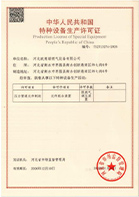
Dec . 28, 2024 13:36
Back to list
safety relief valve
Understanding Safety Relief Valves A Critical Component in Pressure Management
Safety relief valves are essential devices used in various industrial applications to protect equipment and ensure the safety of personnel. These valves serve a pivotal role in pressure management systems by preventing over-pressure conditions that can lead to catastrophic failures. Understanding the mechanics, applications, and importance of safety relief valves is crucial for anyone working in fields involving pressurized systems.
A safety relief valve operates by opening automatically when the pressure in a system exceeds a predetermined limit. This action allows excess pressure to escape, thereby preventing potential explosions or equipment damage. The construction of a safety relief valve typically features a spring-loaded mechanism that holds the valve closed under normal operating conditions. When the internal pressure reaches the valve's set point, the force exerted by the pressure overcomes the spring force, causing the valve to open and release the pressure until it falls back to an acceptable level.
One common type of safety relief valve is the spring-operated valve, which is widely used in industries such as oil and gas, chemical manufacturing, and power generation. These valves can be adjusted by changing the tension on the spring to set the desired release pressure. Another type is the pilot-operated valve, which utilizes a smaller pilot valve to control the larger main valve. Pilot-operated valves are known for their ability to handle high flow rates and can be more efficient in larger systems.
safety relief valve

The importance of safety relief valves cannot be overstated. In many industrial processes, the failure to relieve excess pressure can lead to explosions, equipment failure, and even loss of life. Historical incidents, such as the Bhopal disaster in India, underscore the critical necessity of effective pressure management systems. In that case, the failure to maintain safe pressure levels in a chemical plant resulted in one of the worst industrial disasters in history, highlighting the need for robust safety mechanisms like relief valves.
Moreover, safety relief valves must be regularly maintained and tested to ensure proper functionality. Like any other mechanical device, these valves can become faulty over time due to wear and tear, corrosion, or clogging. Routine inspections should include checking the valve’s set pressure, ensuring there is no blockage in the discharge path, and verifying the mechanical components, such as the spring and seals, are in good condition. Companies must also adhere to relevant codes and standards, such as the American Society of Mechanical Engineers (ASME) Boiler and Pressure Vessel Code, which outlines guidelines for the design, testing, and installation of safety relief valves.
In addition to safety, relief valves also play a role in system efficiency. By managing pressure effectively, they help maintain optimal operating conditions, which can enhance productivity and reduce energy costs. Industries that neglect proper pressure management not only face safety risks but may also experience increased costs due to inefficient operation or unplanned downtime.
In conclusion, safety relief valves are a critical component in ensuring the safe and efficient operation of pressurized systems across various industries. Their ability to manage excess pressure protects both people and equipment from dangerous over-pressure situations. By understanding their function, maintaining them diligently, and adhering to safety standards, industries can mitigate risks and promote a safer working environment. As technology advances, ongoing innovation in relief valve design and materials will continue to improve their reliability and performance, further enhancing safety protocols in industrial operations.
Latest news
-
Safety Valve Spring-Loaded Design Overpressure ProtectionNewsJul.25,2025
-
Precision Voltage Regulator AC5 Accuracy Grade PerformanceNewsJul.25,2025
-
Natural Gas Pressure Regulating Skid Industrial Pipeline ApplicationsNewsJul.25,2025
-
Natural Gas Filter Stainless Steel Mesh Element DesignNewsJul.25,2025
-
Gas Pressure Regulator Valve Direct-Acting Spring-Loaded DesignNewsJul.25,2025
-
Decompression Equipment Multi-Stage Heat Exchange System DesignNewsJul.25,2025

